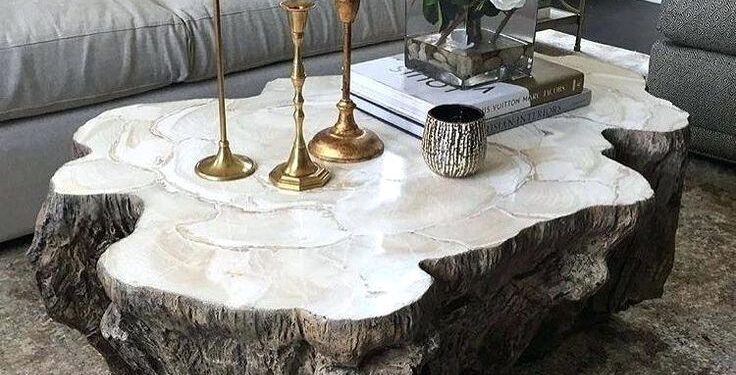The coffee table often serves as the centerpiece of your living room, family area, or even the bedroom. It’s more than just a functional piece of furniture where you rest your coffee cup or remote control; it’s a focal point that can tie the entire room together. However, without intentional styling, it can quickly become a catch-all for miscellaneous items like keys, loose change, mail, or magazines, leading to a cluttered and disorganized appearance.
Styling your coffee table is an art that combines practicality with aesthetics. With thoughtful arrangement and a few decorative touches, you can transform your coffee table into a showcase that reflects your personality and enhances your home’s overall design. In this guide, we’ll explore several tips and ideas to help you organize and decorate your coffee table, ensuring it remains both functional and visually appealing.
Use Trays for Organization and Decoration
A. Trays as Storage Solutions
Incorporating trays into your coffee table setup is a simple yet effective way to keep things organized. Trays serve as defined spaces where you can place items like remote controls, coasters, candles, or small decorative pieces. By grouping these items together, the tray prevents them from spreading out across the table and creating visual clutter.
Benefits of Using Trays:
- Organization: Trays compartmentalize your belongings, making it easier to find what you need when you need it.
- Mobility: If you need to clear the table quickly, you can simply lift the entire tray and set it aside.
- Versatility: Trays come in various sizes, shapes, and materials, allowing you to choose one that fits your coffee table and complements your decor.
Tips for Choosing Trays:
- Size Appropriately: Select a tray that is proportional to your coffee table. It should be large enough to hold your items but not so big that it overwhelms the space.
- Consider Functionality: If you frequently entertain guests, opt for a tray that can double as a serving platter.
- Material Matters: Choose a material that matches or contrasts with your coffee table for added visual interest. Common materials include wood, metal, acrylic, and woven fibers.
B. Trays as Decorative Elements
Beyond their organizational benefits, trays can also serve as stylish accents that enhance your room’s aesthetic. By selecting a tray that aligns with your interior design theme, you can elevate the look of your coffee table.
Matching Trays to Room Themes:
- Minimalist Spaces: For a clean, modern look, choose a clear acrylic or glass tray. These materials keep the focus on the items within the tray and create an uncluttered appearance.
- Rustic or Farmhouse Decor: Wooden trays with natural finishes or distressed paint add warmth and character.
- Glamorous Interiors: Metallic trays in gold, silver, or rose gold bring a touch of elegance and shine.
Decorative Items to Place in Trays:
- Aromatherapy Candles: Candles add ambiance and a pleasant scent to your space.
- Books or Magazines: A selection of your favorite reads invites guests to pick one up.
- Small Plants or Flowers: A vase with fresh flowers or a potted succulent introduces a natural element.
- Artistic Objects: Decorative items like sculptures, figurines, or unique collectibles showcase your personal style.
By thoughtfully arranging these items within the tray, you create a curated vignette that draws the eye and adds depth to your coffee table display.

Decorate with Books
A. Using Your Book Collection
Books are not only sources of knowledge and entertainment but also versatile decorative elements. Utilizing books on your coffee table adds layers of color, texture, and height, contributing to a more dynamic and engaging display.
How to Incorporate Books:
- Stack Horizontally: Lay books flat and stack them to create varying levels. This technique is excellent for showcasing the covers and provides a base for smaller decorative items placed on top.
- Mix Sizes and Colors: Combine books of different sizes and colors to add visual interest. Coordinate the colors with your room’s palette or choose contrasting hues for a bold statement.
- Protect Your Books: If you’re concerned about wear and tear, use older books you don’t mind handling or consider purchasing decorative books designed for display purposes.
Considerations:
- Placement: If you’re using cherished books, place them on a coffee table that’s less likely to be disturbed, such as one in a reading nook or secondary living area.
- Accessibility: Ensure that the books are easy to reach if you or your guests might want to browse through them.
B. Decorative Replica Books
Decorative or replica books are specially designed for aesthetic purposes. They often feature stylish covers and can be an excellent addition to your coffee table without risking damage to your personal collection.
Benefits of Using Replica Books:
- Durability: These books are made to withstand handling and can serve purely decorative functions.
- Customization: Many retailers offer replica books with customizable covers to match your decor.
- Cost-Effective: They can be a more affordable option compared to using collectible or rare books.
Enhancing the Look:
- Add Accents: Place small sculptures, glass boxes, or decorative stones on top of the stacked books to create a focal point.
- Theme Coordination: Choose replica books that reflect your interests or align with the room’s theme, such as fashion, travel, or art.
By thoughtfully incorporating books into your coffee table styling, you add a personal touch that reflects your interests and makes your space more inviting.
Incorporate Greenery
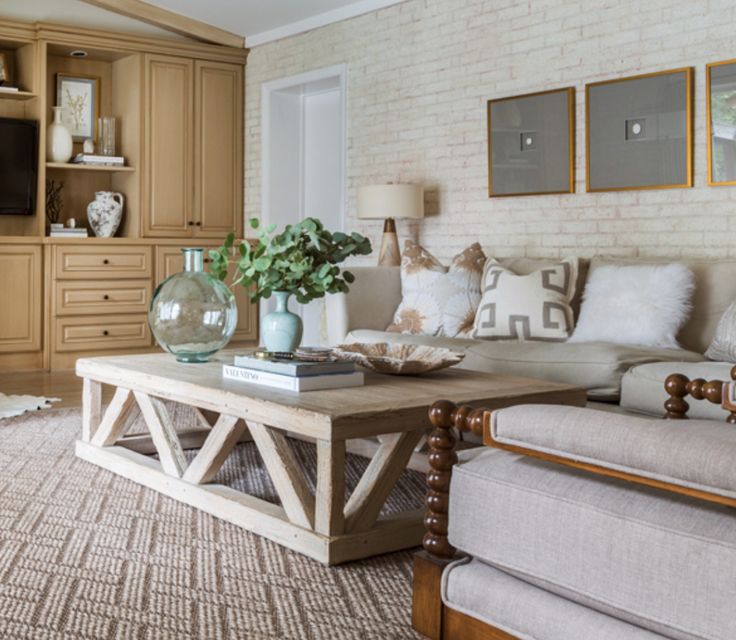
A. Benefits of Adding Plants
Introducing plants to your coffee table arrangement brings life and energy into your living space. The natural elements of greenery can soften hard lines, add color, and improve the overall ambiance.
Advantages of Greenery:
- Aesthetic Appeal: Plants add visual interest with their shapes, textures, and colors.
- Mood Enhancement: Studies have shown that plants can reduce stress and improve mood.
- Air Purification: Live plants can improve air quality by filtering toxins.
B. Suitable Plants for Coffee Tables
When selecting plants for your coffee table, consider their size, maintenance needs, and how they complement your decor.
Ideal Plant Choices:
- Succulents and Cacti: Perfect for small spaces, these plants require minimal care and come in various shapes and sizes.
- Orchids: With their elegant blooms, orchids add a touch of sophistication and can be a conversation starter.
- Bonsai Trees: These miniature trees are visually striking and embody a sense of tranquility.
- Artificial Plants: If maintenance is a concern, high-quality artificial plants can provide the same aesthetic benefits without the upkeep.
Display Tips:
- Pot Selection: Choose pots or planters that match your decor, such as ceramic, glass, or woven baskets.
- Grouping: Create a small collection of plants with varying heights and textures for a more dynamic display.
- Placement: Ensure plants are positioned to receive adequate light if they are live and consider rotating them periodically.
By adding greenery to your coffee table, you create a fresh and vibrant atmosphere that enhances the overall appeal of your living space.
Mix Textures for Visual Interest
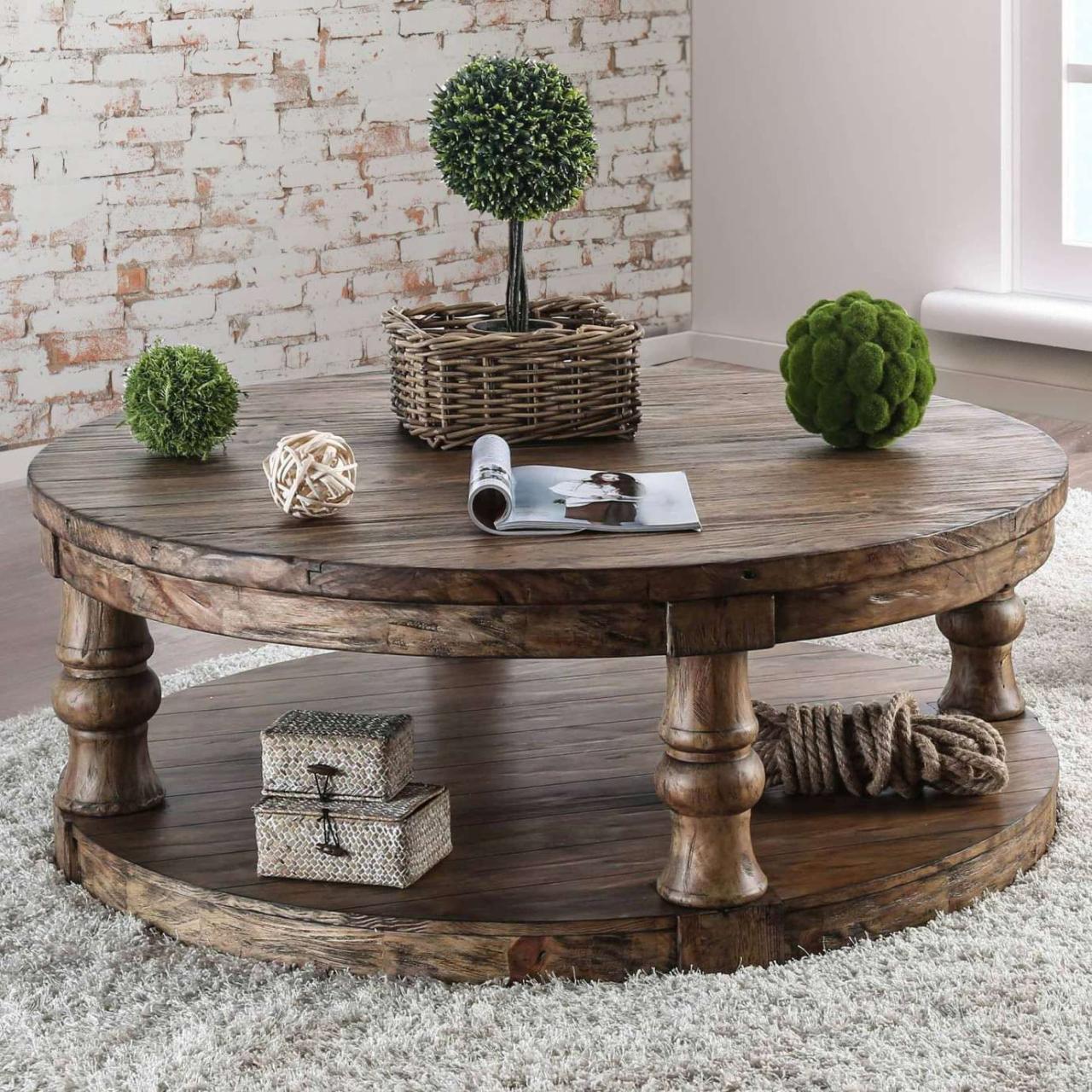
Combining different textures on your coffee table can create a rich and layered look that captures attention. Mixing materials like wood, metal, glass, and fabric adds depth and prevents the arrangement from feeling flat or monotonous.
How to Mix Textures:
- Contrast Materials: Pair smooth surfaces with rough ones, such as a sleek metal tray on a rustic wooden table.
- Layer Items: Place a woven fabric runner or placemat beneath hard objects to soften the look.
- Include Natural Elements: Incorporate items like stones, shells, or driftwood to bring in organic textures.
Examples of Texture Combinations:
- Porcelain and Wood: A porcelain vase filled with flowers set on a wooden tray blends elegance with warmth.
- Glass and Metal: A glass candle holder with a metallic base adds shine and transparency.
- Fabric and Ceramic: A stack of fabric-bound books next to a ceramic sculpture introduces tactile variety.
Achieving Balance:
- Limit the Palette: Stick to a cohesive color scheme to unify the different textures.
- Vary Heights and Shapes: Use items of varying heights and shapes to guide the eye across the arrangement.
- Avoid Overcrowding: Be selective with your pieces to prevent the table from looking cluttered.
By thoughtfully mixing textures, you create an engaging and harmonious coffee table display that adds character to your room.
Hide Clutter with Storage Boxes
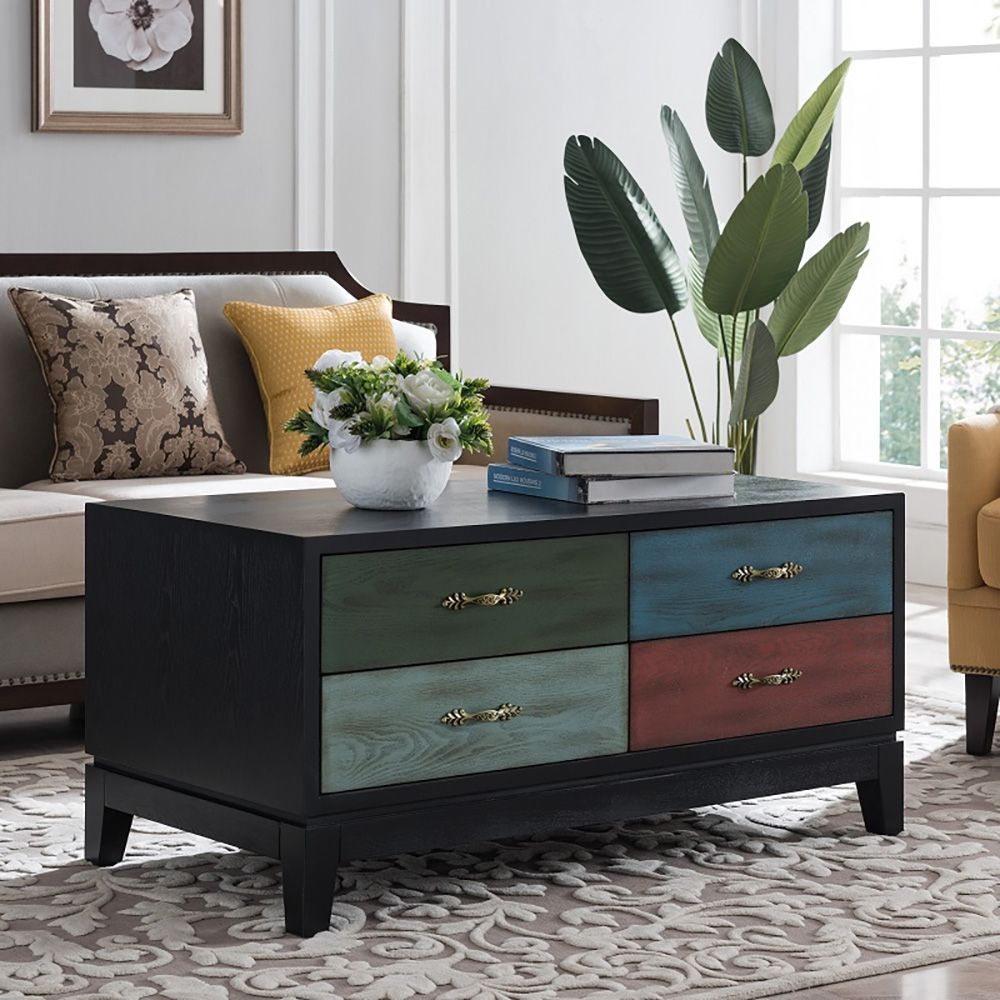
A. Storage Boxes on Coffee Tables
Storage boxes are an excellent solution for keeping small items out of sight while maintaining easy access. They can conceal everyday essentials like remote controls, chargers, or reading glasses, helping your coffee table stay neat and organized.
Selecting Storage Boxes:
- Size and Shape: Choose boxes that fit well on your coffee table without occupying too much space.
- Material and Design: Opt for boxes that complement your decor, such as wooden boxes for a rustic look or sleek lacquered boxes for a modern touch.
- Functionality: Consider boxes with compartments or lids for added organization and discretion.
B. Aesthetic Storage Solutions
Storage boxes don’t have to be purely functional; they can also enhance your coffee table’s visual appeal.
Incorporating Storage Boxes Stylishly:
- Stack Them: Arrange multiple boxes of different sizes for a tiered effect.
- Decorate the Boxes: Adorn the lids with small decorative items like ribbons, tassels, or monograms.
- Coordinate Colors: Match the boxes to your room’s color scheme for a cohesive look.
Quick Decluttering:
- Ease of Use: When unexpected guests arrive, simply place loose items into the storage boxes to instantly tidy up the table.
- Versatility: Storage boxes can be easily moved if you need to clear the table for entertaining or other activities.
By integrating storage boxes into your coffee table decor, you maintain a clutter-free surface without sacrificing style.
Add Scents with Diffusers or Candles

A. Aromatherapy Elements
Scent plays a significant role in creating a welcoming and comfortable environment. Placing a diffuser or scented candles on your coffee table not only adds to the visual aesthetic but also fills the room with pleasant aromas that can enhance mood and relaxation.
Benefits of Aromatherapy:
- Stress Reduction: Certain scents like lavender or chamomile promote calmness.
- Invigoration: Citrus or peppermint scents can energize and refresh the space.
- Personalization: Choose fragrances that reflect your preferences or the atmosphere you wish to create.
Using Diffusers:
- Types of Diffusers: Options include reed diffusers, ultrasonic diffusers, or decorative oil burners.
- Safety Considerations: Diffusers are generally low-maintenance and pose less risk than open flames.
B. Aesthetic Appeal of Diffusers and Candles
Even when not in use, diffusers and candles can serve as decorative pieces that enhance your coffee table’s look.
Enhancing Visual Appeal:
- Stylish Containers: Select candles in elegant jars or diffusers with artistic designs.
- Grouping: Arrange multiple candles of different heights and sizes for a cohesive display.
- Accessories: Use candle holders or trays to elevate the presentation.
Safety Tips:
- Supervision: Always monitor lit candles and keep them away from flammable materials.
- Placement: Ensure that diffusers or candles are placed securely to prevent spills or accidents.
By incorporating scented elements into your coffee table decor, you engage multiple senses and create a more immersive and enjoyable environment.
Embrace Minimalism
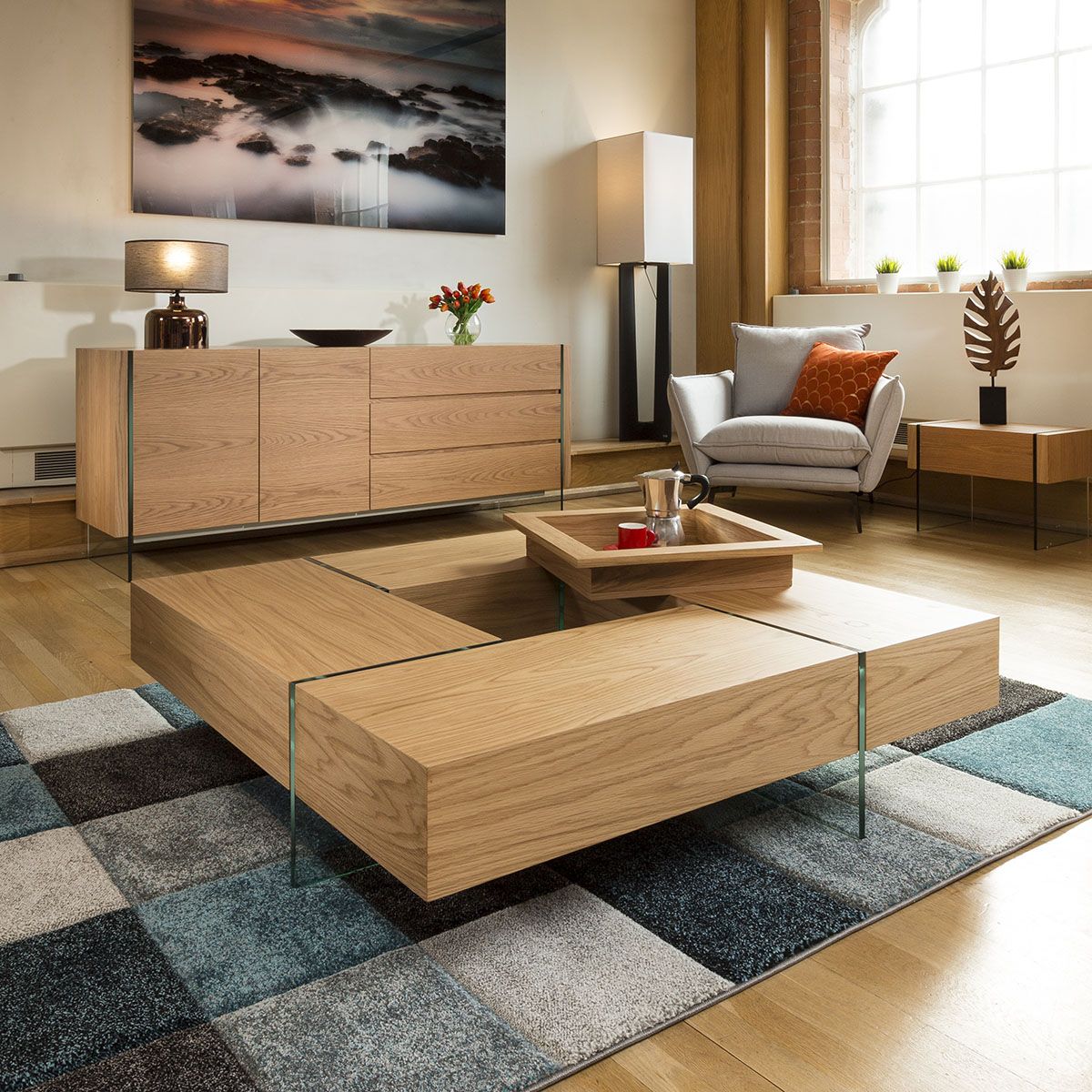
A. Minimalist Styling
A minimalist approach to coffee table styling focuses on simplicity and intentionality. By using fewer items, you create a clean and uncluttered look that can make your space feel more open and serene.
Key Principles of Minimalist Styling:
- Quality Over Quantity: Choose a few meaningful pieces rather than many small items.
- Negative Space: Allow for empty spaces on the table to let the design breathe.
- Clean Lines: Opt for items with simple shapes and minimal ornamentation.
Examples of Minimalist Decor:
- Single Statement Piece: A striking vase with fresh flowers or a unique sculpture can serve as the focal point.
- Monochromatic Palette: Stick to a limited color scheme to maintain a cohesive look.
- Functional Items: Use necessary items, like coasters or a small tray, that also contribute to the aesthetic.
B. Benefits of Minimalism
Adopting a minimalist style offers practical advantages, especially for those with busy lifestyles.
Advantages:
- Easy Maintenance: Fewer items mean less to clean and dust, saving time and effort.
- Reduced Clutter: Minimalism helps prevent the accumulation of unnecessary objects.
- Enhanced Focus: A simple arrangement draws attention to the quality and beauty of each piece.
Implementing Minimalism:
- Edit Regularly: Assess your coffee table periodically to remove items that are no longer needed or appreciated.
- Be Intentional: Choose decor that serves a purpose or brings you joy.
- Stay Consistent: Apply minimalist principles throughout the room for a harmonious design.
By embracing minimalism, you create a coffee table display that is both elegant and manageable, allowing you to enjoy your space without the stress of constant upkeep.
Conclusion
Styling your coffee table is an opportunity to express your creativity and personalize your living space. Whether you prefer a lavish display filled with textures and colors or a minimalist arrangement that emphasizes simplicity, the key is to strike a balance between functionality and aesthetics.
Recap of Tips:
- Use Trays: Organize and decorate with trays that match your decor.
- Decorate with Books: Incorporate your favorite books or decorative replicas for added interest.
- Incorporate Greenery: Add life to your space with plants suitable for coffee tables.
- Mix Textures: Combine different materials for a layered and dynamic look.
- Hide Clutter: Use stylish storage boxes to keep essentials out of sight.
- Add Scents: Enhance the ambiance with diffusers or scented candles.
- Embrace Minimalism: Simplify your arrangement for a clean and modern feel.
Remember, there are no strict rules when it comes to styling your coffee table. Feel free to experiment with different arrangements and items until you find a look that resonates with you. By paying attention to both the practical and visual aspects, you can create a coffee table that not only serves your needs but also elevates the overall design of your home.

